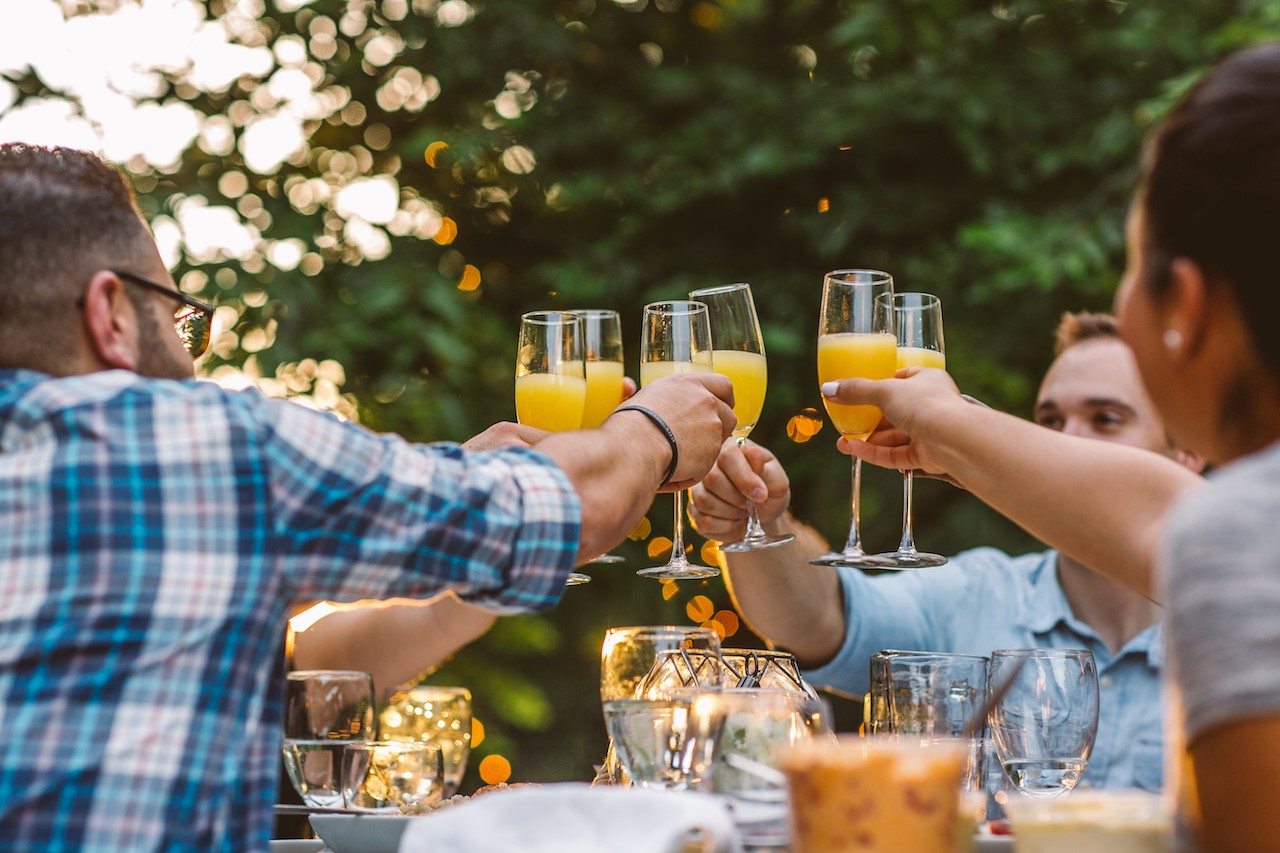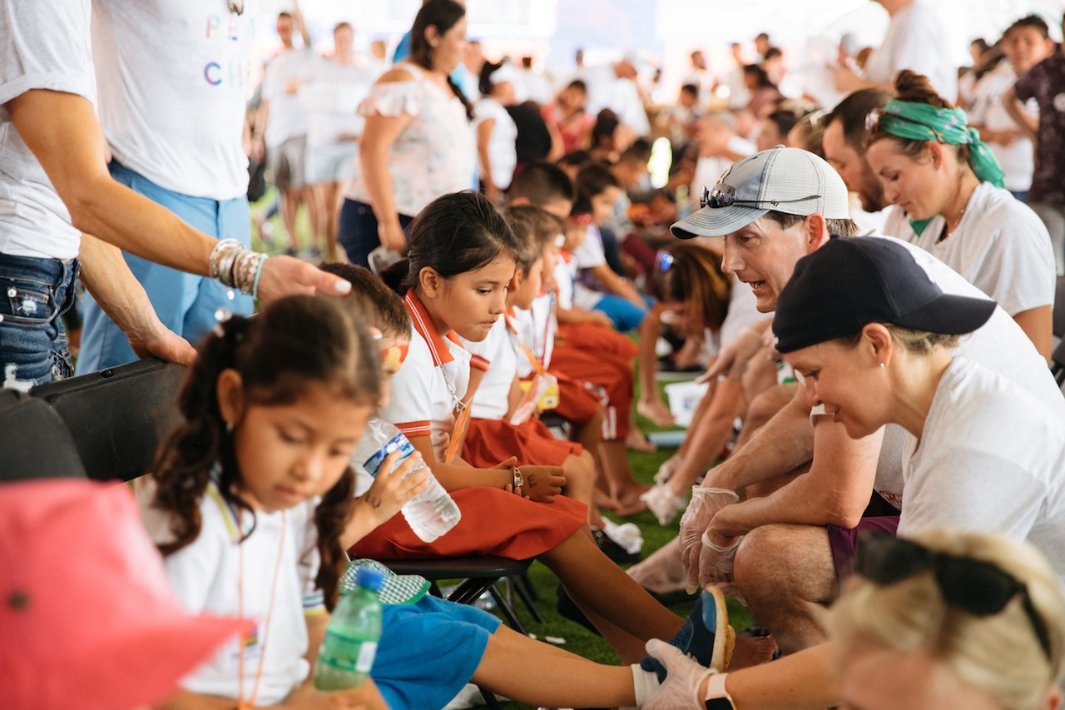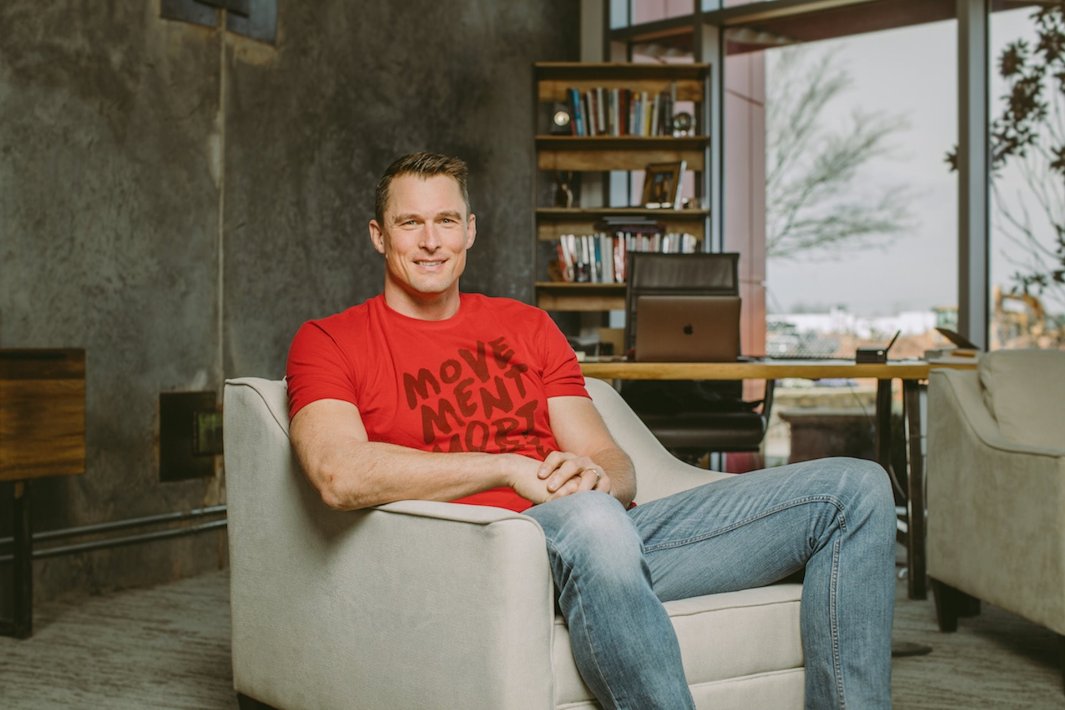Let Us Break Bread: How food brings us all together
Where Sarah Hazel grew up, in a close-knit community 30 miles north of Philadelphia, they eat the pieces of cured ham atop a bed of sauerkraut every New Years.
The 33-year-old assistant to the city manager calls it "Taylor pork roll" and, judging by how it's prepared on a recent Saturday, it resembles bits of generously seasoned fried bologna.
Some in the small huddle of people assembled at a coworking space in Charlotte, N.C., were new to this dish, pioneered in New Jersey and eaten throughout the Mid-Atlantic United States.
But, as they often do when it comes to food, they cast apprehension aside and fork it onto their plates amid a smattering of salmon cakes, cheesy tomato dip and crispy bacon.
Food has a knack for bringing people together, forging bonds and creating conversation.
It's a centerpiece of holiday festivities. It's how neighbors welcome newcomers into their community. In the dining room, families share traditions. In restaurants, romance and relationships blossom. And in many homes, the kitchen is hailed as one of the most important meeting spaces.

It's no different for this group of communal eaters.
For eight months, they've gathered one Saturday a month for lunch excursions to ethnic eateries, beginning with Turkish delights and sausage at a Bosnian market to more recently chowing on chicken, beef and spongy bread at an Ethiopian restaurant.
They met just a year ago in a leadership program for professionals younger than 40. And, seeking a way to build relationships outside their mandatory sessions, decided that friends who eat together, stay together.
"Each month, we'd have more people and more people (attend)," says Kendel Bryant, the unofficial organizer for the lunch outings. "I know I enjoy seeing everyone and talking to everyone. This is my way of trying to keep everyone connected."
This was the first time they cooked for each other.
The task was to bring something special or indigenous to your family and share it with the group, potluck-style. The result: A medley of dishes carrying colors and aromas that compete for attention.
It was Hazel's idea. "We do a lot of sharing but we don't always get to know about who people are or where they come from," she says.
It was effective.
Between swigs of birch beer — a red carbonated beverage made from the bark of a birch tree — the group divulge guilty pleasures, talk local politics and tackle an intense regional foods debate that's raged in the Carolinas for decades: Mustard-based barbecue versus vinegar-based.
The sociology of food
What is it about humans that compel us to gather over a full plate and hearty beverage?
One answer suggests it's both cultural and sociological.
Eating together provides space for people to learn social norms and morals within their respective communities, says Dr. Alice Julier, program director and associate professor of food studies at Chatham University in Pittsburgh. "Family meals (are) where people eat certain things; it's how they get bonded together, learn the rules of life."
Julier, a sociologist, has studied the topic of food and community for years, and in 2014 wrote "Eating Together: Food, Friendship, and Inequality," a book exploring the social dynamics of shared meals.
Food is really individual and very social at the same time," she says.
Think about it: Most meals are social. Even someone eating alone is watching television or spending time online, she says: "We are very rarely truly alone."
Eating opens the avenue for communication. Julier gives an example: Two people may be sitting together eating strawberries but have very different feelings about them (one person could love them, the other person detest them).
That creates an opportunity for those people to discuss their opposing tastes.
"The way we have that shared experience is by talking about it," Julier says. "It doesn't mean that the people you gravitate toward always have the same taste. It means that you live in a universe where that conversation" happens.
Is the dinner table dead?
Despite the social benefits of sharing meals, some would suggest that people don't eat together like they used to, as schedules get busier and the communal dinner table becomes a relic of simpler times.
In some respects, that may be true. A 2013 study from the Hartman Group, a food industry research firm in Washington state, found that 53 percent of American consumers eat breakfast alone, while 45 percent go solo for lunch and 24 percent do the same for dinner.
But there's also data showing the contrary.
A Gallup survey, also from 2013, reports that 53 percent of U.S. families still eat dinner together at home six to seven nights a week. And a 2014 study from the Corporation for National and Community Service shows that about 88 percent of people frequently eat dinner with members of their household.

So what's with all the hype about the death of the dinner table?
Perhaps it's because imagery of the intact nuclear family harmoniously eating around the dinner table may not be as prevalent today as it was in the heyday of television shows like "Leave It to Beaver" and "The Brady Bunch."
"People complain about not eating family meals during times of social upheaval and change," Julier says, addressing rhetoric that society loses its morals when families stop eating together. "It doesn't mean people aren't eating family meals. It just looks different than it used to."
Cooking up connections
In Keia Mastrianni's life, eating with others matters a lot.
She's a freelance writer, spending her days reporting on farmers, chefs and burgeoning food trends. She manages a blog dubbed "Keia is Hungry." She bakes pies on the side, and lives on a North Carolina farm.
Every so often, she and her partner play host to intimate gatherings among foodies and friends, where "we cook together, put our hands in things together, conversations happen and people share."
Those dinners — which, she admits, likely serve up more eclectic cuisine than your average get-together (many of her friends are involved in the food community) — act as a kind of retreat from the hustle-and-bustle of everyday life.
"We're not worried about what's going on in the rest of our lives and the myriad things everybody has to do," Mastrianni says.
For that brief couple of hours, we get to kind of enjoy the space and enjoy being with one another."
Naturally, there's tons of conversation — usually over what's spread on the table. Questions abound.
"How did you prepare that dish?"
"What ingredients did you put in it?"
"We get to introduce people to new flavors or new things they haven't tried," she says. "We love feeding people. When you're breaking bread with someone at the table, the table becomes your common ground, where you can share in food. It serves as a bridge over many things."
Among those things, language. She and her partner worked on a farm during a recent trip to Chile.
Mastrianni isn't fluent in Spanish. But come dinner time, that was a minor detail.
Food was shared and a rapport established.
Food "breaks all language barriers," Mastrianni says. "It doesn't matter where you are. If there's food or music, there's a kind of connection and understanding."

'…In this together'
Thirty minutes pass at the Charlotte luncheon and the plates are almost empty.
There's laughter, conversation about voting and questions to break the silence: How did you make this? When do most people eat it? What does it mean to your family?
It was Kevin Giriunas' first time eating with this group on a weekend. He's co-owner of Advent Coworking, the space where they came bearing Tortilla chips and crockpots.
Giriunas brought the bacon, and he liked the vibe.
"Casual," he says. "Come-as-you are, a judgment-free zone. You can relax. You don't have to be on stage at all."
Why should that matter?
The more your guard is down, the faster you build relationships," he says.
Hazel can relate. She first joined the lunch crew when they toured the Ethiopian restaurant.
"It seemed like it was an adventure because you're trying something new, or maybe something you haven't eaten a lot of," she says. "It's kind of like we're all in this together."


